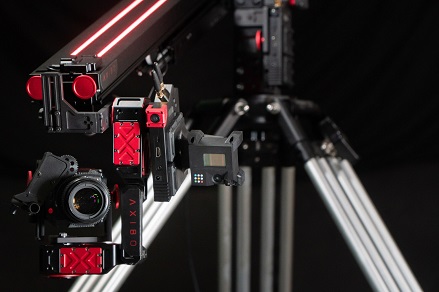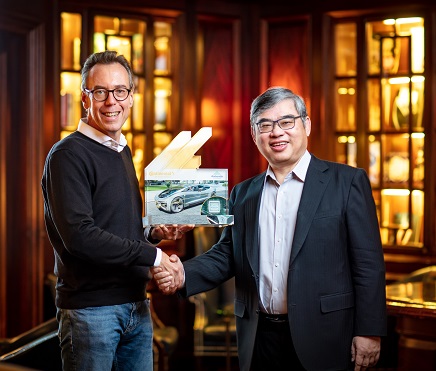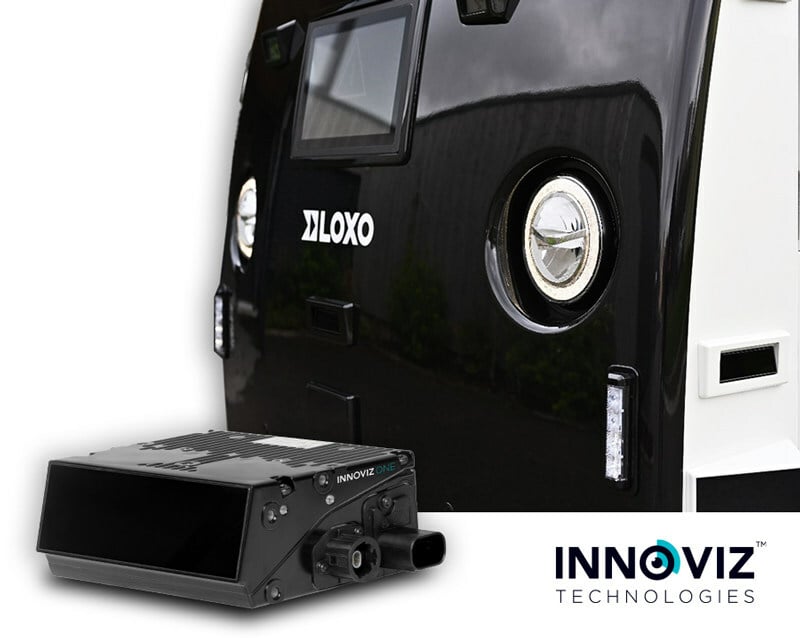Photonics HandbookBusiness
CES 2023 Puts Optical, Photonic Sensor Technology on Display
LAS VEGAS, Jan. 6, 2023 — The Consumer Electronics Show, the signature annual event of the Consumer Technology Association, kicked off Jan. 5 in Las Vegas. Photonics Media is tracking the technology demonstrations, partnerships, and photonics industry news originating at the trade show.
Integrated photonics company ANELLO Photonics is showcasing its SIPHOG advancement, which the company claims is the world’s first silicon photonics gyroscope. The low-noise, low-drift, optical gyroscope uses PIC technology previously developed by ANELLO, resulting in a compact device that supports navigation and positioning in autonomous applications. According to Mario Paniccia, ANELLO’s CEO, the SIPHOG solution offers an alternative to complex and expensive fiber gyroscopes for customers in the autonomy space. ANELLO released its Optical Gyroscope and Global Navigation Satellite System/Inertial Navigation System Evaluation Kit for autonomous applications in June 2022.
Solid-state lidar scanning technology developer Opsys Tech Ltd. closed its series C financing round after raising $36.5 million. The total amount of series C funding climbed to $51.5 million, the company said, as it looks to ramp up commercial automotive production quantities of its lidar sensor solutions. Opsys also announced a collaboration with Wideye, a corporate scaleup launched by Tokyo-based AGC Group focused on autonomous vehicle ecosystems, as well as a solution co-developed with existing collaborator SL Corp. With Wideye, Opsys partnered to develop a lidar-integrated windshield featuring sensors covering a 120 HFOV. The companies showed a prototype at CES and aim for a product release this year. Opsys and SL Corp. co-developed a lidar-integrated smart taillight solution that the companies said is targeted for production cars as early as 2025. The solution supports autonomous parking and behind-vehicle blind spot elimination.
Lidar developer Luminar announced its second-quarter 2022 acquisition of automotive lidar mapping company Civil Maps, amid its reveal of an HD 3D mapping software platform launch that the company developed following the acquisition. In addition, the company hosted the North American debut of the Volvo EX90, as well as the SAIC Rising Auto R7, building on previous announcements. The company also revealed a new company brand strategy and logo evolution.
Semiconductor solutions developer OMNIVISION announced two partnerships — one with waveguide technology provider DigiLens Inc. and one with automotive camera video processor maker GEO Semiconductor — and signed an MOU with automotive connectivity company AVIVA Links Inc. With DigiLens, OMNIVISION aims to develop augmented reality/virtual reality/extended reality (AR/VR/XR) products for new markets and applications. The company’s partnership with GEO Semiconductor targets an RGB-IR solution for automotive cabin monitoring systems; in a demonstration, OMNIVISION is combining its OX05B1S 5 megapixle (MP) RGB-IR images sensor with GEO Semiconductor’s GW6 intelligent camera processor. Per OMNIVISION’s MOU with AVIVA Links, the companies will jointly develop camera systems based on the Automotive SerDes Alliance specifications.
Lidar technology company Ouster signed a strategic customer agreement with autonomous driving software company Cyngn. The agreement will add Ouster’s REV7 digital lidar sensors to the Cyngn DriveMod platform. DriveMod is an all-in-one autonomy integration package that enables the conversion of standard industrial vehicles into fully autonomous ones by utilizing advanced lidar sensors, hardware components, and artificial intelligence (AI) software. The DriveMod package can be installed into new vehicles off the assembly line or retrofitted into existing vehicles.
Photonic Crystal Co. Ltd. showcased what it reports to be the world’s first transparent projection TV, using its NanoAR material. NanoAR is a proprietary nano-optic material that selectively controls the light from a projector while allowing ambient light to pass through. The technology enables full-color high-definition displays with images that overlap with surrounding views. Applications include digital signage, automotive smart cockpit, AR-head-up displays (AR-HUD), and AR. The technology is expected to appear in transparent sunroof display applications as early as the third quarter of 2023.
Holo Industries debuted its Holographic Touch technology, which provides responsive mid-air interaction without the use of special lighting, glasses, or headgear. Holo Industries’ product line has expanded to include a dozen new formats, from a 100-mm door entry system to a kiosk with a life-size holographic avatar.

Lumotive’s lidar reference design with LCM beam steering technology integrated with AXIBO’s Precision eJib — the designed-for-cinema, 6-axis robotic arm with 3D sensing capabilities. Courtesy of AXIBO.
Lumotive, developer of light control metasurface (LCM) beam steering chips, and AXIBO, a cinema robotics company and developer of autonomous camera motion control systems, unveiled AXIBO’s Precision eJib — a designed-for-cinema, 6-axis robotic arm with 3D sensing capabilities made possible with Lumotive’s LCM beam steering technology. The jointly developed solution gives photographers and videographers capabilities such as smart object tracking, enhanced image stabilization, and new autofocus features. Lumotive this week announced it received $13 million in funding.
Autobrains Technologies, Ambarella, and Seeing Machines announced a strategic collaboration to offer three safety systems in a single box, using a single system-on-chip (SoC). The companies’ joint offering provides automakers with a streamlined multicamera solution — including a forward-facing camera up to 8 MP and an in-cabin camera up to 5 MP. Autobrains is an AI mobility company that develops self-learning AI technology and products covering all levels of advanced driver assistance systems (ADAS) and autonomous driving (AD); Ambarella Inc. is an edge AI semiconductor company; and Seeing Machines Limited is a supplier of AI-powered driver and occupant monitoring systems technology to improve transport safety.

Continental and Ambarella entered a strategic partnership to jointly develop full-stack software and hardware system solutions for both assisted and automated driving. Courtesy of Continental.
Technology company Continental and Ambarella will jointly develop scalable, end-to-end hardware and software solutions based on AI for assisted and automated driving on the way to autonomous mobility. The strategic collaboration builds on Continental’s announcement in November 2022 to integrate Ambarella’s energy-efficient SoC family into its ADAS systems. In addition to the development of camera-based perception solutions for ADAS, the companies are focusing on scalable full-stack systems for Level 2+ up to highly automated vehicles. These full-stack solutions take a multisensor approach, including Continental’s high-resolution cameras, radars, and lidars, as well as the associated control units and the required software. Vehicle manufacturers will be able to flexibly integrate the joint system solutions into their latest vehicle generations. The companies aim to have the joint solutions developed through the strategic partnership ready for global series production in 2026.

LOXO, a provider of zero-emission autonomous vehicles for last-mile delivery services, is planning to use InnovizOne lidar to enable autonomy for its delivery vehicles, which allow retailers to transport goods from local distribution hubs to end consumers more efficiently and with fewer emissions. Courtesy of PRNewsfoto/Innoviz Technologies.
Solid-state lidar developer Innoviz is collaborating with Exwayz, a deep-tech company developing 3D lidar processing software, to demonstrate lidar-based perception solutions for nonautomotive applications. Innoviz’s collaboration with Exwayz is intended to add Exwayz’s plug-and-play perception software to Innoviz’s existing perception software capabilities, creating a turnkey solution for the development and demonstration of Innoviz’s lidar technology across a wide range of applications, including logistics, construction, security, and last-mile delivery services. In a separate development, LOXO — a provider of zero-emission autonomous vehicles for last-mile delivery services — announced it plans to use InnovizOne lidar to enable autonomy for its delivery vehicles. Following the initial evaluation period, LOXO plans to purchase InnovizOne lidar units to support its delivery fleet, with pre-sales for the vehicle beginning as soon as 2023.
/Buyers_Guide/Luminar_Technologies_Inc/c31314
/Buyers_Guide/OMNIVISION/c10721
/Buyers_Guide/DigiLens_Inc/c3681
/Buyers_Guide/Ouster_Inc/c31569
/Buyers_Guide/Holo_Industries_LLC/c32929
/Buyers_Guide/Lumotive_LLC/c32643
/Buyers_Guide/Ambarella_Inc/c25143
/Buyers_Guide/Innoviz_Technologies_Ltd/c31299